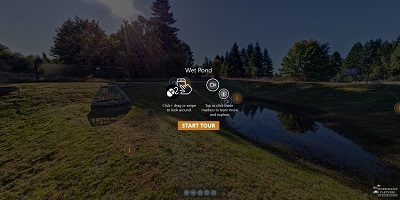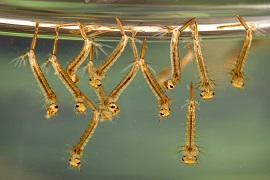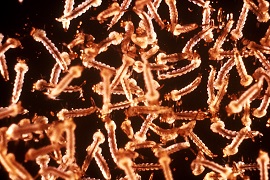Wetpond
A wetpond, or wetpool, is an open basin that has a pool of water year-round. The volume of the wetpond allows sediment to settle out as stormwater runs in. Wetland vegetation is typically planted to provide additional treatment by removing nutrients such as phosphorus and nitrogen.
Typically, there are two pools. Stormwater flows into the first pool, where sediment settles before moving into the second pool. The water is then discharged to streams and groundwater.
Wetponds also have additional temporary storage above the permanent water level to detain and slowly release stormwater. They often are fenced for safety and sometimes incorprate a detention pond.
Virtual tour
Click on the image below to get inside of a wetpond and learn about common components and maintenance tasks.
Maintenance needs commonly associated with wetponds
Maintenance sheets
Maintenance is needed if you see these signs
Bare, exposed soil
Slopes that are deteriorating
Sediment that restricts flow or clogs inlet and outlet pipes
Sediment buildup, especially on base of pond
Unhealthy or dead vegetation
Blackberries or other problem weeds
Overgrown vegetation
Holes in berms or slopes
Leaves, trash and other debris
Water surface is discolored or has an oil sheen
First cell/pond is empty and doesn't hold water
Berm dividing cells should be level so water flows evenly over entire length of berm
Trees, often alders, growing on the slopes










